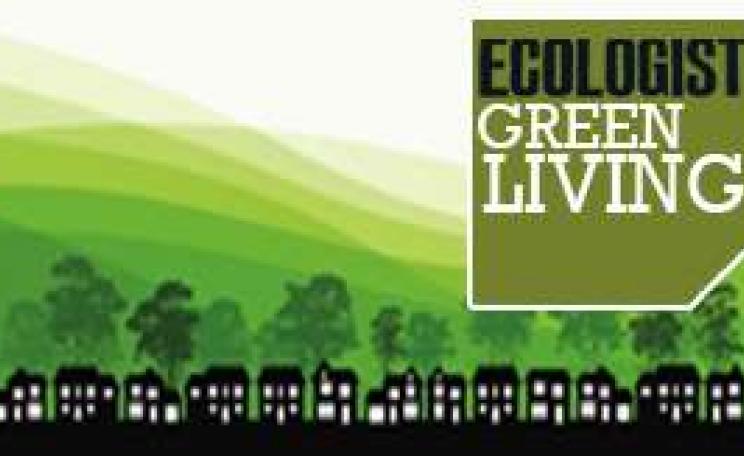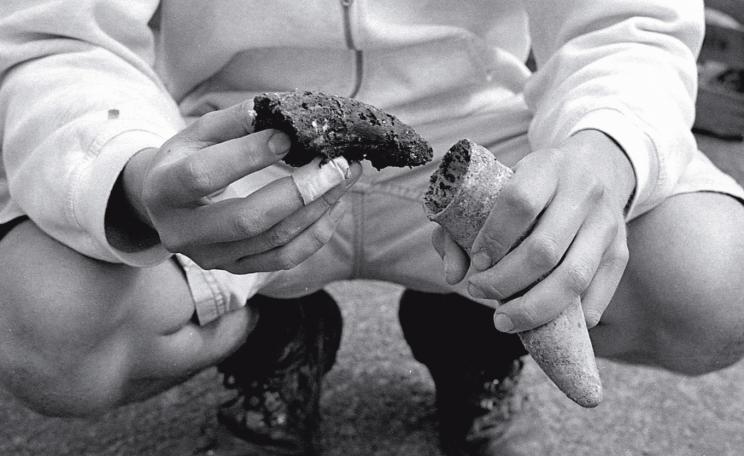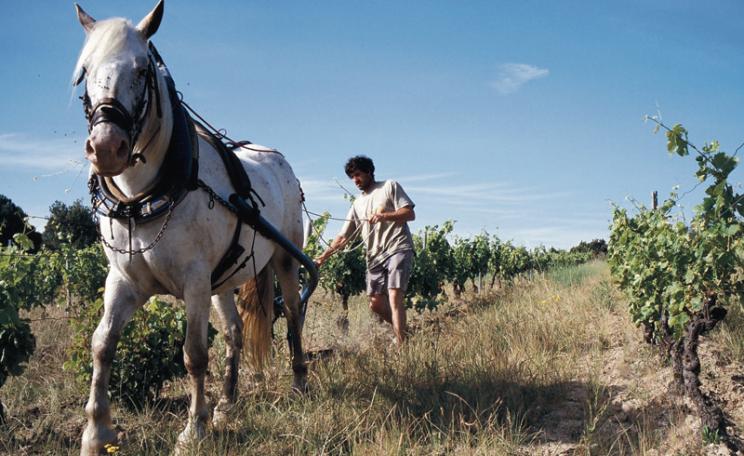As every good winegrower will tell you, vines will over-produce if forced to suck up chemical fertilisers.
By the time I took the plunge myself I had lost count of the number of times friends – and friends of friends – had asked me about getting their own vineyards. I’m not saying the way I did it will appeal to everyone: renting rather than buying a vineyard, and often sacrificing profit to try to farm with as much environmental integrity as I could manage. What I will say, though, is that if you follow some basic rules you’ll minimise your risks in what is, after all – like all types of farming – an inherently risky occupation.
The first thing I had to consider when contemplating swapping a life spent commentating on other peoples’ produce for a life making my own was where did I want to make my wine?
I’ve been lucky enough through my job as a freelance wine writer to be paid to travel to and scrutinise most of the world’s wine regions, and just as you would check out the area in which your potential dream home is located, there really is no subsitute for spending as much time as you can immersing yourself in the local wine culture of whichever region has taken your fancy. Will you like the food, the climate and people? Will you like the local wines? And with vineyards in places as esoteric as Bolivia, Thailand, India and even Yorkshire, the world really is your vinous oyster.
In my case, it was an interview I had conducted with an English winemaker – Robert ‘Bertie’ Eden, who had a biggish organic winemaking operation in the Languedoc region – that helped me one in on Mediterranean France.
Bertie had searched all over the world for his vineyards and, having crunched the numbers, he told me that Mediterranean France was the place for a winemaker to be.
‘This was the most interesting and, per square metre, the cheapest place in the world to buy vines,’ he explained. ‘The wine can legitimately be labelled “made in France”, which still has immense cachet, whatever the critics say. If you are looking to invest in vineyards you must be looking pretty long-term; and if you’re looking long-term, France is a pretty safe bet. I mean, the fields I walk across were first planted as vineyards by the Romans.’
This all made sense to me. As well as writing about wine I’ve also lived and worked on vineyards in a few of the world’s wine regions: Bordeaux, California, Chile, Argentina, Tuscany and Germany. All of these I ruled out for one reason or another, such as lack of US resident’s status (California), distance (Chile), too strong a black economy (Italy, Argentina) and my desire to make red wine first and foremost (most German wine is white).
In Bordeaux’s case, apart from the very high prices of vineyards (tens of millions of pounds for the very best châteaux), the climate was a big negative. This is because it rains more in Bordeaux than in the drier, hotter Mediterranean – and rain and humidity can bring the type of vine diseases that make the organic and biodynamic winegrowing I favour frustratingly difficult. Why buy a house in an area where your windows are liable to be broken every night by street kids when you can buy one in a quiet neighbourhood instead?
In vino veritas
It was all very well having identified Mediterranean France as the place in which I wanted to make my own wine, but I now had to find the exact vineyard in which to do it – not as easy as it sounds in area with so many thousands to choose from.
These vineyards are mostly found in the Languedoc sub-region, which runs roughly from Provence as far as Narbonne. It was the smaller and less well-known Roussillon region, which runs from Narbonne to the Pyreìneìes mountains, that attracted my attention, however.
While researching a book on biodynamic wines I had come across Eric Laguerre, a grower who was making his own wines as well as renting out some of his vineyards to people I knew in the English wine trade. Eric’s wines had come out very close to the top in a blind tasting I did of more than 100 Roussillon wines, and so I arranged to meet him at his cellar in the village of St-Martin-de-Fenouillet.
The visit went so well that when, a couple of years later, I was ready to make wine myself, I asked Eric if he would rent some vineyards to me.
Sat high in the hills between the CorbieÌeÌres and Pyreìneìes mountains, approximately 45 minutes’ drive from Perpignan, the vines in the area around St-Martin-de-Fenouillet ripen much more slowly than those nearer the Mediterranean. Slow ripening is one factor that helps
make the kind of smooth but fresh tasting and not too alcoholic red wines I like to drink.
Eric was used to being jolted around as we drove between rows of vines in an old pick-up truck built like a Second World War tank, and he found it amusing that I should even try to take written notes as I was being hurled around the cab.
He revealed that he’d taken over the family vineyards after his father died a few years before and that it had been very easy to make the switch to organics.
‘We don’t really need chemical fungicides here as it’s so windy,’ he explained, referring to the tramontana, a mountain wind that blows almost daily. ‘The tramontana has a drying effect on the vines meaning that if it does rain there’s no time for fungus diseases such as rot or mildew to take hold and damage the grapes. All the humidity the fungal diseases need in order to reproduce is dried by the wind.’
There was, however, a downside: low yields. The wind that dried the grapes of disease had a drying effect on the grapes themselves, meaning they’d be small in size and each would thus produce only a small amount of precious juice.
The amount of wine that may be produced from any given vineyard is strictly controlled by French wine law. Although the law said I could potentially make over 3,600 bottles of wine per acre of vineyard, Eric explained that I’d actually be lucky to get one-third of this amount: 90 hectolitres per hectare is allowed by law; I would be lucky to get 30 hl/ha (100 litres = one hectolitre).
‘The vineyard I’ll rent you is on mountain,’ Eric said. ‘It’s dry, steep and windy. The vines really have to struggle, and when vines struggle they produce few grapes – but at least they’ll be of good quality.’
The vines planted in this particular vineyard produced a red wine grape known as Carignan, which was popular after the Second World War, when times were tough. On lower lying and thus more fertile sites than Eric’s – and with a bit of help from powerful chemical fertilisers – it gave huge yields of grapes.
‘The trouble with Carignan,’ said Eric, ‘is if you force it into producing lots of grapes, the grapes won’t be properly ripe and you’ll end up with a nasty red wine tasting of unripe bananas and burnt rubber.’
This was one reason why Carignan had such a bad reputation. It was despised by many modern wine writers and, due to the burgeoning wine lake, the authorities had even begun paying winegrowers to rip it up and plant ‘better’ – i.e. lower yielding – grape varieties (such as Syrah and Grenache, and even Merlot or Cabernet Sauvignon).
It is only recently that Carignan’s reputation has swung full circle, the general consensus being that it is a good grape if farmed correctly – not forced to over-produce and grown on the kind of mountain sites – like mine – where it doesn’t have the opportunity to do so.
In a chemical world
As every good winegrower will tell you, vines will over-produce if forced to suck up chemical fertilisers. These salts are designed to dissolve in the soil when it rains; the vines suck them up and end up growing
too quickly – as though they have been given a whole year’s worth of food in just one or two days. Like couch potatoes, they become more prone to disease. The cell walls in the grape skins or vine leaves are simply not strong enough to prevent attack from fungus disease spores.
So my first challenge as a would be biodynamic winegrower was to remember the words of the founder of biodynamics, Rudolf Steiner (of Steiner-Waldorf schools fame): putting a tonne of fertiliser on the
land may give us one tonne of food, but as that food would essentially have come from inert or lifeless fertiliser, the food – or in my case wine – would lack vitality or soul.
Steiner’s suggestion was to feed the soil with compost, which, rather than being inert, is full of life, from worms to billions of beneficial microbes. This soil would then feed the vines and make for more vibrant and complex-tasting wines.
It takes several months for a pile of manure, waste vegetation and used grape skins and stems to rot into good compost, however, and I didn’t have that kind of time. Besides, my partner Silvana (a professional auditor) had made it quite clear that I didn’t have the budget to buy and keep a small herd of cows for the manure. So I purchased around 15 tonnes of municipal compost, recycled from green municipal waste, mainly lawn clippings from public parks and tree prunings from roadsides. As biodynamics is all about recycling dead stuff so as to bring life back to the soil this didn’t put me off.
One of Eric’s conditions for renting me the vineyard was that I maintained its official organic status, which implicitly ruled out non-organic compost. The compost I bought was not only certified organic, but also contained exactly the right amount of carbon, the food of choice for the kind of soil micro organisms I wanted to encourage.
The biodynamic man
What it didn’t contain, however, were the six so-called ‘biodynamic compost preparations’, made from yarrow, chamomile and dandelion flowers, whole stinging nettles minus the roots, oak bark and a liquid extract made from crushed valerian flowers. A few teaspoons of this is supposed to be placed in the compost as the piles are laid out.
They carry what biodynamic growers call ‘life forces’ into the compost. In other words, as well as providing physical sustenance and life for the soil – the carbon, the worms, the microbes – compost should also promote invisible ‘life forces’. These are said to help plants grow more strongly, allowing them to tap into beneficial earthly rhythms such as the changing seasons, and even lunar and other cosmic cycles (full to new moon, for example). In short, you get more naturally resistant vines and wine that tastes more interesting.
In the last few years there has been an explosion of interest in biodynamics among winegrowers, not just in France but in Chile, California, Australia, Germany and New Zealand too. Silvana’s mother, Francesca, was even getting into biodynamics, having heard me talk about it over dinner at their family’s Tuscan home. Francesca had a huge vegetable garden at the back of the house and was asking almost daily for tips on how she could manage it in a greener, more organic way.
On a last-minute shopping trip with Francesca before I moved from Tuscany to begin my French adventure, she asked me a question.
‘What I don’t understand is that you want to be biodynamic,’ she said as we drove along, ‘and to be biodynamic you need the compost to have these six medicinal plant preparations. So why are you using
only organic compost?’
I explained that if, like me, you hadn’t been able to get the six biodynamic compost preparations into your newly made compost piles before the beginning of the composting process, there is a short-cut: you make what is called biodynamic barrel compost.
Whereas it can take anything up to a year for a normal compost pile to become ready, only a month or two is needed for barrel compost. You make it by stirring the six biodynamic compost preparations into some fresh cow manure for an hour or so. Then you put the mixture into a barrel you’ve half-buried in the ground. Stirring in some ground up eggshells provides calcium, which is said to help diffuse the radiation that interferes with plant growth, such as that from the fall out of Chernobyl.
I also explained to Francesca that I was planning to spread my organic municipal compost – and to make the biodynamic barrel compost – according to one of several lunar cycles to get the maximum benefit from them into the soil and into my vines. Unfortunately, before I had finished the process, the car we were travelling in was thumped by another car driven way too fast by a young guy who was not looking at the road because he was speaking on his mobile phone.
Rushed to the hospital, x-rays revealed a fracture in my back. Not only would all plans for composting my vines have to be put on hold, but also all the rest of my work – putting in permanent danger the entire vineyard project.
Monty's story continues in next month's Ecologist...
This article first appeared in the Ecologist April 2008
For ethical and sustainable suppliers of Food and Drink goods and services check out the Ecologist Green Directory here
As every good winegrower will tell you, vines will over-produce if forced to suck up chemical fertilisers.







